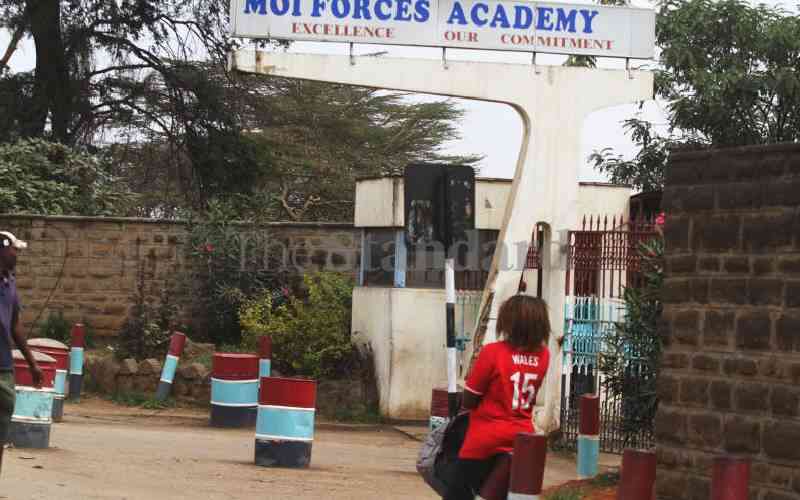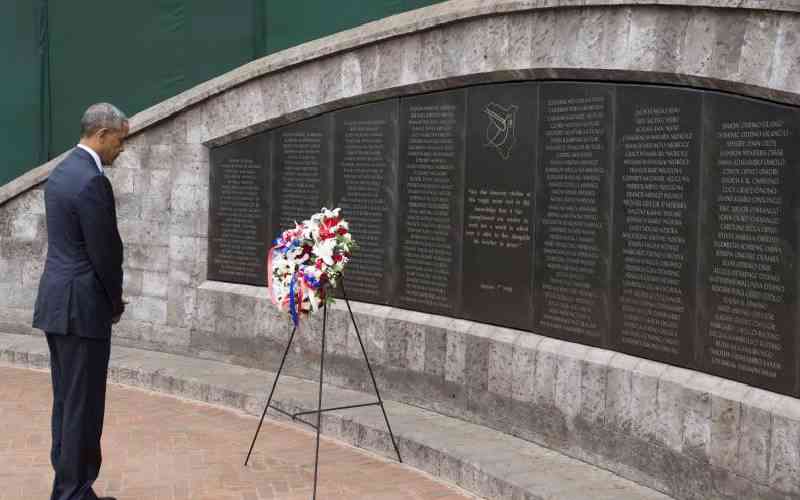About 15 years ago, Nairobi’s Upperhill was a low-density population area, mainly home to Government top honchos. However, today the area is a major financial hub albeit with minimal infrastructure to support the massive growth, writes WANGECI KANYEKI
Over the last 15 years, Nairobi’s Upperhill area, which was once a single dwelling, low density residential area, has been rezoned to a commercial district resulting in the area experiencing unprecedented construction of high rise buildings and conversion of old residential building to modern high rise offices.
As the Nairobi Central Business District became congested, there was a need to create an alternative business district and Upper Hill became the perfect location.
Previously owned by Kenya Railways, the 700 acres of prime land was at the time not fully utilised and its close proximity to Government offices and the Central Business District made it the ideal location to evolve into a premium commercial centre.
Stretching from Haile Selassie Avenue to Valley Road, Uhuru Highway onto Ngong Road through Kenyatta Hospital, the area is demarcated by feeder roads such as Elgon Road, Hospital Road and Mara Road.
Most banks and other institutions are relocating their headquarters to Upperhill as they strategically position themselves at the future financial capital of East and Central African Region.
Major landlords include, Coca-Cola East & Central Africa, Rahimtulla Trust, British American Insurance, British High Commission and Kenyatta National Hospital.
Others are Madison Insurance, Nairobi Club, European Union, Don Bosco Church, Crown Plaza, Kenya Association of Tour Operators (K.A.T.A) and Kenya Union of Savings & Credit Cooperatives Limited (KUSCCO) amongst others.
Bank institutions like Equity Bank, Citibank, Commercial Bank of Africa and upcoming Kenya Commercial Bank headquarters are making the area a one-stop business centre as clients no longer need to go into Central Business District to do their banking.
Appreciating Land Value
As a result, the land value in Upper Hill has appreciated significantly ,especially due to its proximity to the Nairobi Industrial Area and the two main airports namely, Jomo Kenyatta International Airport and Wilson Airport.
According to Managing Director of real estate firm, CB Richard Ellis, Gikonyo Gitonga, “An acre of land, which would fetch Sh25 million 15 years ago is now selling for approximately Sh350 million. Office space is currently selling for about Sh13,000 per square foot and renting from Sh85 per square foot exclusive of service charge.”
However, the infrastructure has not kept the pace and has not developed as fast as required. With the commercial development fast outstripping the infrastructure, the once narrow residential pathways can no longer accommodate the increased number of vehicles.
Congested traffic jams are a horrendous nightmare for residents and employees, and one can take almost two hours on the road for what would be a 15-minutes drive on a jam-free day.
Fortunately, road reserves exist and Kenya Urban Roads Authority are on the ground upgrading the roads in Upperhill.
Stay informed. Subscribe to our newsletter
Upgrading the Roads
According to Director General of Kenya Urban Roads Authority, Engineer Joseph Nkadayo, the road construction is in two phases. Phase one is a Sh200 million project which involves the rehabilitation and upgrading of approximately five kilometres length of roads along Elgon, Kilimanjaro, parts of Hospital, Mara and Upper Hill roads.
This would make expand them into dual roads complete with footpaths, cycle tracks, drainage structures and street lighting. Phase two will open up the lower section of the Upper Hill to Mbagathi Road and Langata Road exits and will reduce congestion.
Improving Power supply
The other challenges of the growing infrastructure needs are power, water and sewer.
According to Kenya Power’s Communication Officer, Kevin Sang, Upperhill area has benefitted from a number of system reinforcement projects aimed at improving quality of power supply to customers.
Sang says, “Kenya Power is currently constructing a new sub-station at Upper-Hill at the cost of Sh650 million with the aim of creating additional capacity in response to growing demand. The project is funded using proceeds from Kenya Power’s recent rights Issue and will relieve Ngong Road substation, which was commissioned by the company in 2009.Installing new substations reduces the length of our distribution lines and consequently reduces the number of line breakdowns and poor voltages previously experienced by customers,” he said.
The area is also set to benefit from an underground power network that Kenya Power is preparing to develop which will further improve reliability and quality of power supply.
The project entails conversion of all the overhead power lines to an underground cable system in major cities including Nairobi.
Water and Sewerage
The rapid development of high-rise buildings at Upper Hill has also created a sharp rise in demand for water and sewerage services.
According to Chief Executive Officer of Athi Water Services Board, Engineer Malaquen Milgo, the board is implementing measures to ensure sufficient water and sewerage for Nairobi City, metropolitan area and satellite towns.
Already the board has completed laying the fourth Ngethu Gigiri pipeline, which will deliver 70,000 cubic litres per day to Gigiri reservoirs. Construction is on going for another pipeline to transfer 40,000 cubic litres per day from Gigiri to Kabete reservoirs.
These interventions will enable adequate water flow to Hill Tank reservoirs near Department of Defence headquarters for distribution within the Upperhill area and city centre. Network modelling has been done and is on course to upgrade the distribution system to ensure 24/7 supply to every water consumer in the city.
Restoration bids
Athi Water Services Board has also commenced the construction of trunk skewers to enhance sewage collection and restoration of Nairobi River. Through this intervention the Upper Hill trunk sewer system running from near Yaya Centre, through Kenyatta National Hospital up to Nairobi West will be reconstructed and expanded to provide sufficient sewage collection capacity.
Furthermore, rehabilitation and extension of existing reticulation sewer network is being undertaken to enhance sewage collection. Rehabilitation of the Uhuru Highway trunk sewer line will be undertaken to effectively and efficiently convey sewage to the Dandora sewage treatment plant at Ruai. Athi Water Service Board has recently launched a four-phased master plan to fulfil water demand for Nairobi City and satellite towns up to the year 2035 and beyond.
Upper hill landlords have also convened together to form The Upperhill District Association, chaired by Sam Kamau. The association aims at advocating for the improvement of their infrastructure needs.
Kamau, urges the service providers to work faster to open up the Madaraka, Kenyatta National Hospital and Kindaruma exits to ease up congestion. He also requests developers to cooperate if they are asked to surrender some land to facilitate the widening of the roads.
In addition he says, “Utilities such as power and sewage are currently overwhelmed and need to be redesigned in order to make Upperhill the financial hub for East and Central Africa.”
Under Kenya’s Vision 2030, the Government has identified Upper Hill as the financial hub of the East Africa region. If the respective service support organisations fulfil their mandate of upgrading roads and improving power and water supplies, then this will spur economic activity and attract investors, making UpperHill the prime address for corporates, second only to Johannesburg’s financial district.
 The Standard Group Plc is a
multi-media organization with investments in media platforms spanning newspaper
print operations, television, radio broadcasting, digital and online services. The
Standard Group is recognized as a leading multi-media house in Kenya with a key
influence in matters of national and international interest.
The Standard Group Plc is a
multi-media organization with investments in media platforms spanning newspaper
print operations, television, radio broadcasting, digital and online services. The
Standard Group is recognized as a leading multi-media house in Kenya with a key
influence in matters of national and international interest.
 The Standard Group Plc is a
multi-media organization with investments in media platforms spanning newspaper
print operations, television, radio broadcasting, digital and online services. The
Standard Group is recognized as a leading multi-media house in Kenya with a key
influence in matters of national and international interest.
The Standard Group Plc is a
multi-media organization with investments in media platforms spanning newspaper
print operations, television, radio broadcasting, digital and online services. The
Standard Group is recognized as a leading multi-media house in Kenya with a key
influence in matters of national and international interest.








